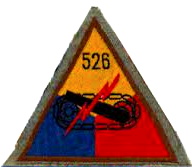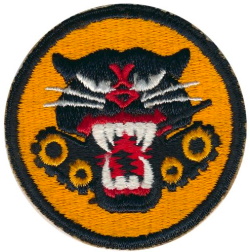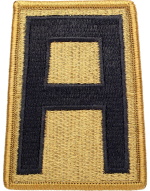Document Source: AAR, Task Force Hansen at Malmedy, 12/44. The following is a report of the action taken by Task Force Hansen in the vicinity of Malmedy and Stavelot. Capt Charles J. Askegaard S2 99th Infantry Battalion (Separate)
FOREWORD
Since the end of World War Two in Europa, there has always been talking about the incompetence of the American Intelligence at the early stage of the German counteroffensive in December 1944, and even during the period December 1/15. Today, with the time and the research carried out on the subject, it is obvious that it is no longer a fact but a certainty. It should however not be forgotten, in the defense of US Intelligence, that at the time, the major part of the American forces, from Gen Dwight D. Eisenhower (SHAEF) to the darkest Private lying in a foxhole somewhere on the northern flank, that the German army, after the losses suffered in Normandy, the virtual destruction of the 5.Panzer-Army in the Falaise Gap, the withdrawal of troops across the entire width of France from west to east, and the systematic destruction of every German unit from the French Riviera up the Rhone Valley before their return beyond the Siegfried Line via the Saar, the Luxembourg, and Belgium, it was out of the question that the remains of the German Armies were capable of generating any counterattack on anywhere on the west side of the West Wall.
When American troops entered Germany in October, capturing the first major German city, Aachen, many units for some reason still unknown today were poured into the costly and bloody fighting in the Hürtgen Forest. Having finally understood that the soft underbelly of the Reich was not in this forest, the troops were placed along the Belgian and Luxembourg border awaiting future events, the massive attack of the allies on Germany, planned for December 15, 1944. It was when the starting signal for the allies’ offensive towards the Roer and Urft rivers that they realized that the Germans were planning exactly the same but on Liège then Antwerp, a day later. This finally makes it possible to understand the importance of all these small combat units, regiments, or battalions in the early hours of the German offensive. The Battalion of US Norwegians (99th Infantry Battalion)(Separate), as well as the 526th Armored Infantry Battalion, were no exceptions. (Doc Snafu)
BATTLE OF THE BULGE – MALMEDY

 On Sunday, December 17, at 1600, 526th Armored Infantry Battalion located in Harzé, was ordered by the US 1-A to move to Malmedy with Able Co, 825th Tank Destroyer Battalion (Capt Joseph H. Dibert) attached, and to join the 99th Infantry Battalion (Separate) (Norwegian) at Remouchamps en route. At 1800, the 99-IB-(S), less Able Co, located in the vicinity of St Hubert for guard duty, moved from Tilff to
On Sunday, December 17, at 1600, 526th Armored Infantry Battalion located in Harzé, was ordered by the US 1-A to move to Malmedy with Able Co, 825th Tank Destroyer Battalion (Capt Joseph H. Dibert) attached, and to join the 99th Infantry Battalion (Separate) (Norwegian) at Remouchamps en route. At 1800, the 99-IB-(S), less Able Co, located in the vicinity of St Hubert for guard duty, moved from Tilff to 
 Malmedy for the purpose of blocking the further advance of the Germans in that sector. At 1900, the 526-AIB was formed on the Aywaille-Remouchamps road and waiting to fall in with the 99-IB-(S) at Remouchamps. Because of permanent road jams, the 99-IB-(S) failed to show up by 2100, and the 526-AIB was ordered to move alone at once, picking up Able Co, 825-TDB en route at La Reid. The plan of the US 1-A was quite simple, assemble the 526-AIB, A-825-TDB, and the 99-IB-(S) (less Able Co), create a strong enough combat group, and place the unit under the command of Col Harold D. Hansen, the CO of the 99-IB-(S), and his battalion executive, Maj Wilford J. Bjornstad. This combat group was to be identified as Task Force Hansen. At about 2030, in the early darkness of this December day, all the units were heading to Malmedy.
Malmedy for the purpose of blocking the further advance of the Germans in that sector. At 1900, the 526-AIB was formed on the Aywaille-Remouchamps road and waiting to fall in with the 99-IB-(S) at Remouchamps. Because of permanent road jams, the 99-IB-(S) failed to show up by 2100, and the 526-AIB was ordered to move alone at once, picking up Able Co, 825-TDB en route at La Reid. The plan of the US 1-A was quite simple, assemble the 526-AIB, A-825-TDB, and the 99-IB-(S) (less Able Co), create a strong enough combat group, and place the unit under the command of Col Harold D. Hansen, the CO of the 99-IB-(S), and his battalion executive, Maj Wilford J. Bjornstad. This combat group was to be identified as Task Force Hansen. At about 2030, in the early darkness of this December day, all the units were heading to Malmedy.
 By that time, the city of Malmedy had been evacuated by almost all the military personnel with the exception of approximately sixty men of the 291st Engineer Combat Battalion under the Command of Col David Pergrin. The Engineers had already established several roadblocks consisting of AT Daisy-Chain mines, and AP mines and were prepared to dynamite bridges and trees to further block the approaches to the city.
By that time, the city of Malmedy had been evacuated by almost all the military personnel with the exception of approximately sixty men of the 291st Engineer Combat Battalion under the Command of Col David Pergrin. The Engineers had already established several roadblocks consisting of AT Daisy-Chain mines, and AP mines and were prepared to dynamite bridges and trees to further block the approaches to the city.
Because of the congested roads caused by the great quantity of personnel and material being evacuated from the threatened areas, the progress of the Task Force toward Malmedy was very slow. Baker Co, 99-IB-(S), which had used a separate route, arrived at the destination at approximately 2400, and with a part of Able Co 526-AFAB attached, immediately took up positions to the southwest of the town to block the roads and occupy the high ground commanding the approach to the town from the south. At about 0300, December 18, the remainder of the Task Force arrived at the destination. Charlie Co 99-IB-(S) took positions to the northeast to block the road from Eupen. Able 526-AFAB and a platoon of the 825-TDB were detached and sent to Stavelot.
On December 18, at 0530, Able Co, 99-IB-(S) in St Hubert, was assembled and alerted. Sent to Malmedy, the company arrived in Stavelot at 1030. Unable to pursue his progression through the town, the column had only one way to go and bypassed Stavelot to the north, via the route to Francorchamps heading to Francorchamps and finally reached Malmedy at 1130. The same day at 1645, three Germans soldiers with two captured American soldiers riding on the hood of a Willys Jeep taken from the 106th Infantry Division approached the roadblock maintained by Baker Co 99-IB-(S) and elements of Pergrin’s 291-ECB. Without hesitation, the defenders opened up, one German who tried to escape was killed and the two others (members of the 1.SS-Panzer-Division LSSAH) were captured. A short time later, at 1830, one Battalion of the 117th Infantry Regiment (30-ID) and one Battalion of the 120th Infantry Regiment (30-ID) arrived in Malmedy and went into position. At 2110, four Fallschirmjäger were reported dropped one-half mile west of Malmedy. In the afternoon, Baker 99-IB-(S) remained in their position at the roadblock while the balance of the battalion withdrew one-half mile to the northwest of Malmedy and went into position as a reserve for the 120/30-ID.
On December 20, at 1700, Baker 99-IB(S) changed positions with Baker 120-IR. On December 21, at 0655, at Coordinates 777037, on roadblock #5 held by Baker 99-IB-(S), the enemy tried to break through with a column of armor and infantry. The column consisted of three US Willys Jeeps, one Half-track, one US M-8, one German Mark V Panther, and two US Sherman tanks. Three of the lead vehicles hit our mines and at the same time were fired upon by our 76-MM Tank Destroyer guns. Mortars and machine guns fire plus all the individual weapons of Baker 99-IB-(S) were placed on the vehicles and personnel. Artillery fire was concentrated along the entire column towards the rear. The attack was repulsed and about 100 enemy infantry were killed by small arms fire and artillery. Three POWs were taken, two from 1/11.Fallschirmjäger Regiment, on from the 1.SS-Panzer-Division. Two Jeeps and one M-8 were recaptured in usable condition. Prisoners stated that they had Tigers and Panthers as well as some American Equipment. According to the Interrogation Team, their missions were to destroy our artillery positions, and the roadblock they attacked, and capture the Railroad crossing Southeast of Malmedy.
At 0915, one platoon of Able 99-IB-(S) was sent to investigate heavy small-arms fire in the town of Burnenville. The remainder of the Battalion was moved to comb the woods and the area west of Malmedy. No enemy was located in the area searched. By 1800, that evening the disposition of the 99-IB-(S) was as follows, Baker Co in the same position it had originally occupied southwest of Malmedy; Able Co in Burnenville and the vicinity, HQs Co, Charlie Co, and Dog Co in the vicinity of 786046. Two 90-MM guns, one 40-MM AAAZ-(AW) gun, and two Quad .50 caliber AAA guns, all from the 110-AAAB were also in this area. At this time one company less one platoon, of the 740-TB was attached to Task Force Hansen and remained in the Battalion area. At 2110, Custer (HQs 30-ID) reported the possibility of an enemy airborne attack during the night, and all personnel was alerted.
On December 27, at 1600, Charlie 99-IB-(S) supported by the artillery from the 230-FAB raided the town of Hédomont. One POW, a member of the Regiment 193 of 18.Volksgrenadier-Division was taken. An estimated thirty enemies were killed during the raid. On December 28, at 1630, Baker 99-IB-(S) supported by the Battalion 81-MM Mortars and the artillery of the 230-FAB, attacked the town of Otaimont. No PW was taken. On December 29, Able 99-IB-(S) took over Baker 99-IB-(S)’s position on the front line, and Charlie 99-IB-(S) took over the sector of Baker 99-IB-(S) formerly occupied by Love Co 3/120-IR. Baker Co was moved into Malmedy in mobile reserve.
During the period, patrolling was conducted and front-line positions were improved by continued digging in and laying of mines.
For the Commanding Officer
Charles J. Askegaard
Captain Infantry
S-2 99th Infantry Battalion (Sep)
Capt Charles A. Mitchell, Able Co, 526-AFAB
Task Force Hansen at Malmedy
The document is dated: January 3, 1945.
The following is a report of the action taken by TASK FORCE HANSEN in the vicinity of Malmedy.
Sunday, December 17 at 1800 hours, the 99th Infantry Battalion (Separate) less Able Co moved to Malmedy from Tilff for the purpose of blocking the further advance of the Germans in that sector. Attached to this Battalion were the 526th Armored Infantry Battalion and Baker Co of the 825th Tank Destroyer Battalion to form Task Force Hansen. Colonel Harold D. Hansen and Major Bjornstad proceeded ahead of the Battalion and arrived in Malmedy at 2130 hours. By that time the town had been evacuated by all military personnel with the exception of approximately sixty men of the 291st Engineer Combat Battalion under the Command of Colonel David Pergrin. The Engineers had established roadblocks consisting of mines and were prepared to dynamite bridges and trees to further block the approaches to the town. Because of the congested roads caused by the great quantity of personnel and material being evacuated from the threatened areas the progress of both these battalions toward Malmedy was slow. Baker 99-IB took a separate route and arrived at the destination at approximately 2400 hours. Baker Co immediately took up positions to the southwest of the town to block the roads and occupy the high ground commanding the approach to the town from the south.
At 0300, December 18, the remainder of the Task Force less Able Co arrived at the destination. Charlie Co 99-IB took positions to the northeast to block the road from Eupen. Able Co 526-AIB and one platoon Tank Destroyer were detached and proceeded to Stavelot. Baker Co 526-AIB and TD guns blocked the approaches to the town from the southwest. Able Co 99-IB which had been occupied on Guard duty around St Hubert was assembled when alerted and at 0530, December 18, proceeded to Malmedy. The column arrived outside of Stavelot at 1030 and was unable to proceed through the town. The unit continued around the town and back into Spa and then proceeded to Malmedy arriving there at 1130. In 1645, three Germans with two American prisoners riding on the hood of an American jeep taken from the 106th Infantry Division approached a roadblock maintained by Baker 99-IB. One of the Germans was shot trying to escape while the others were captured. These men were from the 1.SS-Panzer-Division. In 1830, one Battalion of the 117th Infantry Regiment and one Battalion of the 120th Infantry Regiment arrived in town and went into position. At 2110, four parachutists were reported dropped one-half mile West of Malmedy. On the afternoon of December 19, Baker Co 99-IB remained in position and the rest of the Battalion withdrew one-half mile to the northwest of Malmedy and went into position as 120th Regiment reserve.
On December 20 at 1700, Baker 99-IB changed positions with Baker 120-IR. On December 21, at 0655, at Coordinates 777037, on roadblock #5 held by Baker Co 99-IB, the enemy tried to break through with a column of armor and infantry. The column consisted of three American Jeeps, one Half-track, one American M-8, one German Mark VI tank, and two Sherman tanks. Three of the lead vehicles hit our mines and at the same time were fired upon by our 3” Tank Destroyer guns. Mortar and MG fire and all weapons of Baker Co were placed on the vehicles and personnel. Artillery fire was concentrated along the entire column towards the rear. The attack was repulsed and about 100 enemy infantry were killed by small arms fire and artillery. Three POWs were taken, two from the 1st Co, 11.Fallschirmjaeger-Regiment and one from the 1.SS-Panzer-Division.
Two Jeeps and one M-8 were recovered in usable condition. Prisoners stated that they had Tiger and Panther Tanks as well as some American Equipment. Their missions were: 1. destroy our artillery positions; 2. destroy the roadblock they attacked; 3. capture Railroad crossing southeast of Malmedy. At 0915, one platoon of Able 99-IB was sent to investigate heavy small-arms fire in the town of Burnenville. The remainder of the Battalion was moved to comb the woods and the area west of Malmedy. No enemy was located in the area searched. By 1800, that evening the disposition of the 99-IB was as follows: B Co 99th Infantry Battalion in the same position it had originally occupied southwest of Malmedy. A Co in Burnenville, HQs Company, C Company, and D Company in the vicinity of 786046. Two 90-MM guns, one 40-MM AAA gun, and two Quad 50 caliber AAA guns, all from the 110th AAA Battalion were also in this area. At this time one company less than one platoon, of the 740th Medium Tank Battalion was attached to Task Force Hansen and remained in the Battalion area. At 2110, Custer reported the possibility of an enemy airborne attack during the night, and all personnel was alerted.
On December 27, at 1600, Charlie 99-IB supported by artillery from the 230th Field Artillery Battalion raided the town of Hédomont. One PW was taken. This man was from the 193 Regiment of the 18.Volksgrenadier-Division. An estimated thirty enemies were killed during the raid. On December 28, at 1630, B Co 99th Infantry Battalion supported by artillery and our 81-MM Mortars attacked the town of Otaimont. No PW was taken. On December 29, A Co took over B Company’s position on the front line and C Company took over the sector B Company left formerly occupied by L Company 120th Infantry Regiment. B Company was moved into Malmedy in mobile reserve. During the period, patrolling was conducted and front-line positions were improved by continued digging in and laying of mines.
For the Commanding Officer
Charles J. Askegaard
Captain Infantry
S-2 99th Infantry Battalion (Sep)


















